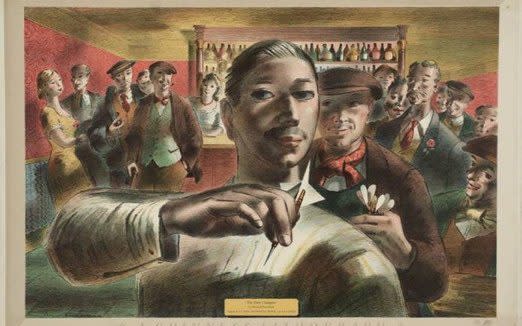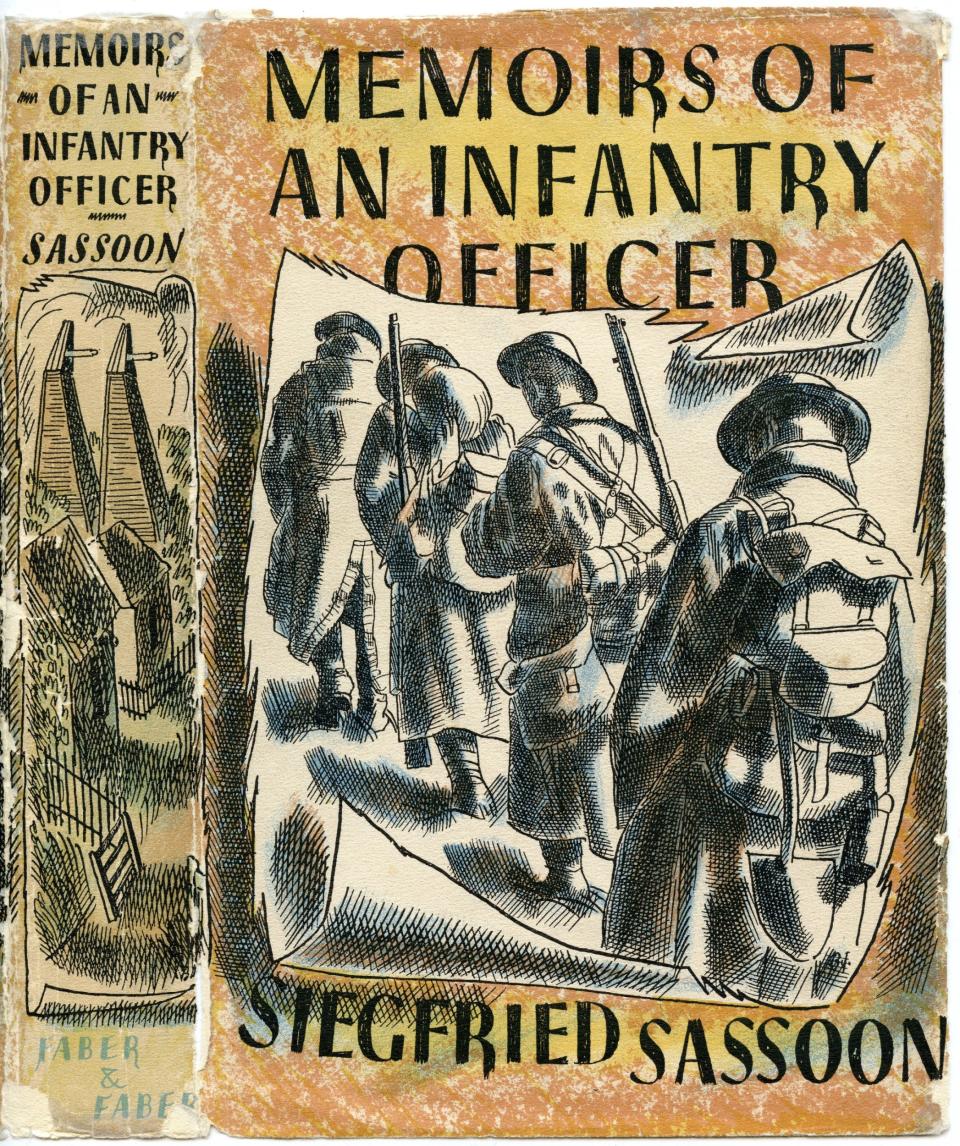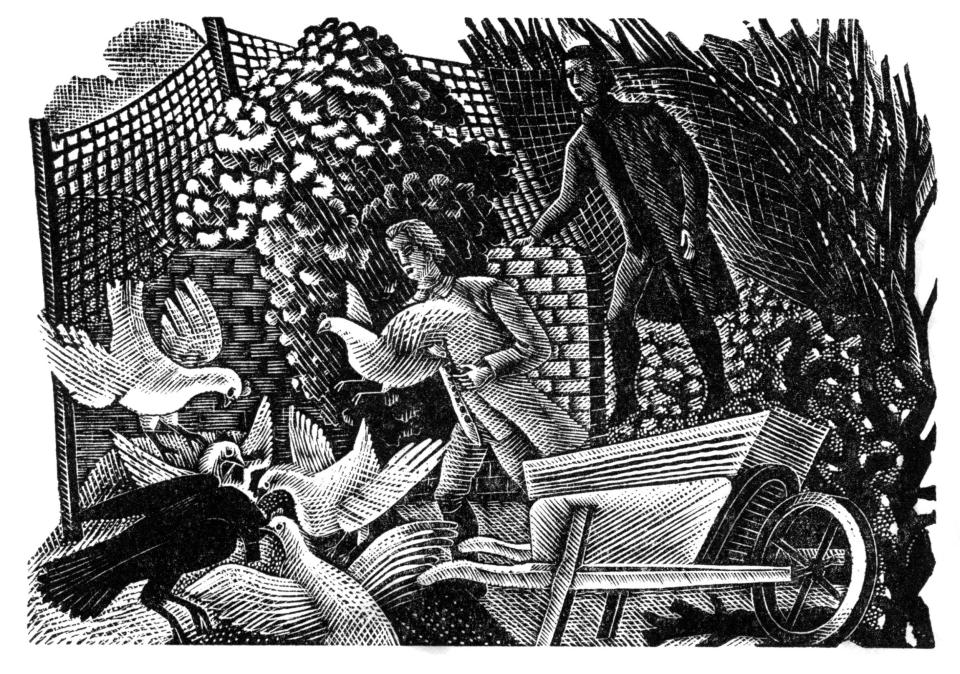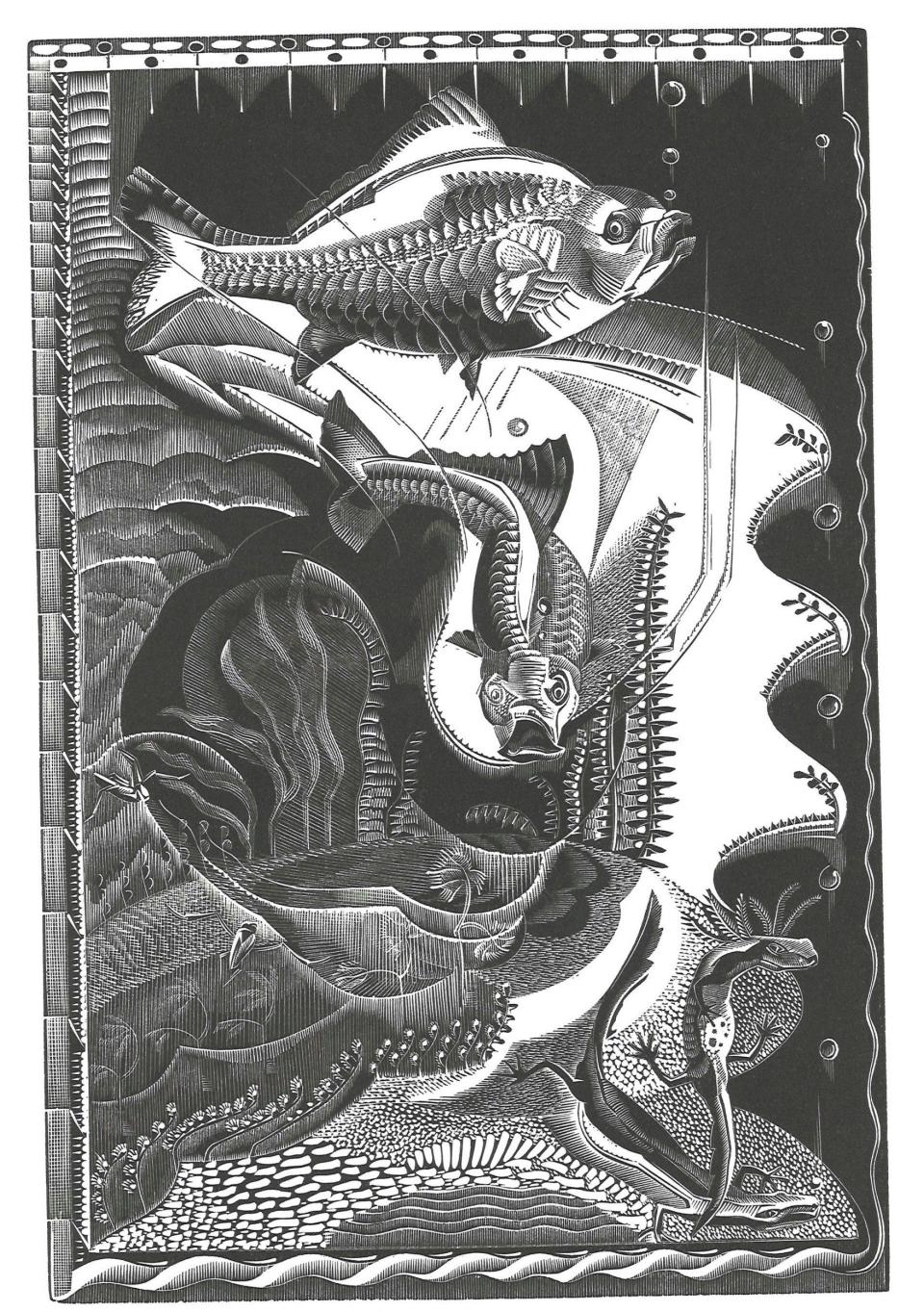Barnett Freedman/Gilbert White, Pallant House, review: two shows to blow off the lockdown cobwebs

Half a century after his untimely death at 57, what do we know of Barnett Freedman? Little, I’d hazard, given the new exhibition of his work at Pallant House Gallery is his first since 1958.
What an oversight. Because, bar a limp early work or two, the exhibition is remarkable – a blow-your-socks-off type of show, which is just what the doctor ordered as we shake off the blear of lockdown.
Freedman was actually very well known in his lifetime (1901–1958), not least because his commercial designs were braided into the everyday visual landscape: on the sides of buses, on book covers and chocolate bars, in Lyons Corner Houses, and on the stamps that were licked and stuck to every letter posted in Thirties Britain.
He took extraordinary care with these pieces (like many artists who came of age in the Twenties, he believed in the credo “art for all”). Even today, the effect of their jewel-bright colour, inventive shadow play and elegant lettering is joyous. Oh, to have lived in such visually-invigorating times.
Consider his work for the oil company Shell, illustrated here by a 1952 poster signalling the end of petrol rationing, and by a concertina paper peepshow (1932) that conjures scenes of London in winter and a woodland in summer (“In Winter or Summer You Can be Sure of Shell”). You spy the poster the moment you walk in – a vibrating blaze of sunny yellow, crisp red and looping, radar-esque lines. As for those peepshows (be sure to crouch down and experience them in full), I’d sell almost anything I own to have one.
Nearby are plenteous examples of Freedman’s Thirties-era book covers – for Anna Karenina and War & Peace, for Oliver Twist, Shakespeare and Siegfried Sassoon. They are each so zesty: strong shadows, expressive faces, whiskery dashes and hatchings. No wonder Faber’s entire roster of authors clamoured to have him assigned to their books.

Much of Freedman’s graphic work has a theatrical bent. It’s visible in his paintings too, in the “portraits” of the Sicilian puppets he kept in his studio, for instance, and those of real dancers and pipers on the stage, but also in a dramatically-lit empty kitchen (1934) and a London street scene (1933–34), in which each figure seems on the verge of pirouetting across the cobbles in their overalls.
From room to room our impression of Freedman builds: what an interesting man he was. Cockney, of Jewish immigrant stock, renowned for his wit and fired by a belief that people were inherently good. Stout and thickset, he cut his artistic teeth lettering lists of the fallen for First World War memorials, and while at the Royal College of Art, earned the moniker “Soc”, as in Socrates, for his fondness for debating. On board the HMS Repulse in the Second World War (he was an Official War Artist) the crew preferred “Mike”, as in Michelangelo.
As for his war work, it deserves a show of its own. Particularly the huge paintings of gun turrets and submarine interiors (1941), which are each so worming with detail that you could return to them 10 times over and still find something new.
I spent a good quarter-hour in front of a composite portrait of the staff at an aircraft factory (1942), and was only just getting started. Here is Miss Woolls, cashier; Sid Hancock the furnaceman; Eric Symmonds, test pilot; and so on, each with such a particular expression that you’d recognise them on the street. What a poignant rebuttal to the anonymity of war.

An auxiliary display of work by Freedman’s cohorts at the Royal College of Art (Bawden, Enid Marx, Eric Ravilious et al), is seriously underwhelming. In making the case for their being “an outbreak of talent”, as tutor Paul Nash memorably suggested – well, you wonder at his judgement.
Better to head downstairs for your Ravilious fix, where a series of engravings he made in 1938 contributes to a small but flavorous exhibition concerning the parson-naturalist Gilbert White’s 18th-century survey of his Hampshire parish.
White spent more than 30 years recording the infinitesimal changes that he observed on his rambles through Selborne. He transposed his findings to a correspondence with two similarly curious naturalists, and, in 1789, published his letters as a book – The Natural History of Selborne.
The exhibition here salutes the book’s afterlife, which is extraordinary, inspiring poets, novelists, naturalists and artists in every century (Wordsworth, Coleridge and Darwin among them). It’s said to be the fourth most published book in the English language, its 300-odd editions illustrated by the likes of John Nash and John Piper, as well as Ravilious, who wrote to a friend that “it is quite the best book I’ve ever been given to do and I love doing it.”
To stand in this square-shaped room is to understand why. In the quiet, one is surrounded on all sides by mistle-thrushes, grasshopper larks, starlings, beehives, tree-tunnels, lashing rain, snakes, owls and some seriously vicious-looking carp.

I’d had high hopes for the Piper, but his indistinct, washy interpretations of White’s prose are the least successful of the lot. Head instead for the Gertrude Hermes (1931), which has a gorgeously writhing, fossily feel, or the Clare Leighton (1941), which holds its own in depicting human rather than animal life: a boy hunting bees, a lunatic, hop-pickers and so on.
The whole is cleverly laid out to demonstrate instantly the way in which the book gathered momentum over the centuries, and also how, while each artist has their own interests, zeroing in on a favourite sentence or vignette, there exists between them an enticing web of tiny nods and homages.
A vitrine in the middle contains several editions of the book (including a first, owned by the current Earl and Countess of Selborne). Meanwhile, each print is partnered with its corresponding excerpt and I spent as much time reading these, which brim with White’s rapture, as I did looking at the prints.
I wonder if it weren’t for the weeks of domestic detainment, whether these two exhibitions would have induced in me quite the buoyant feeling they did. But they did – they do. I left with a spring in my step. I’m sure you will, too.
Barnett Freedman is on until November 1. Gilbert White is on until November 15. Tickets: 01243 774557; pallant.org.uk

